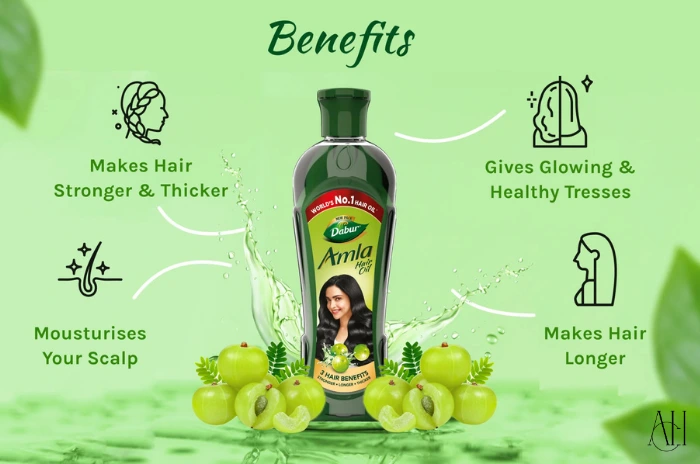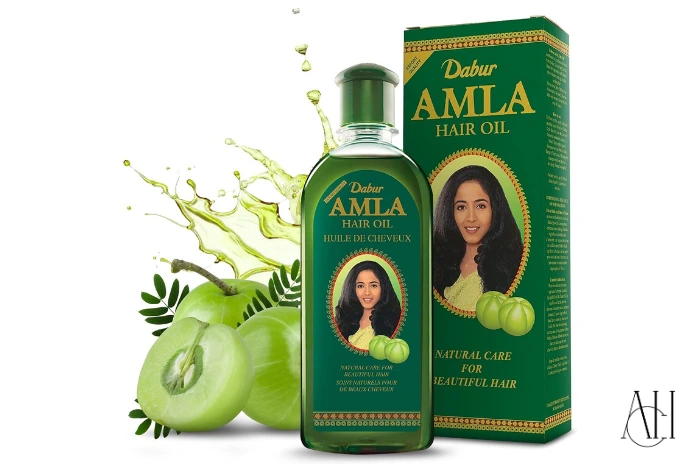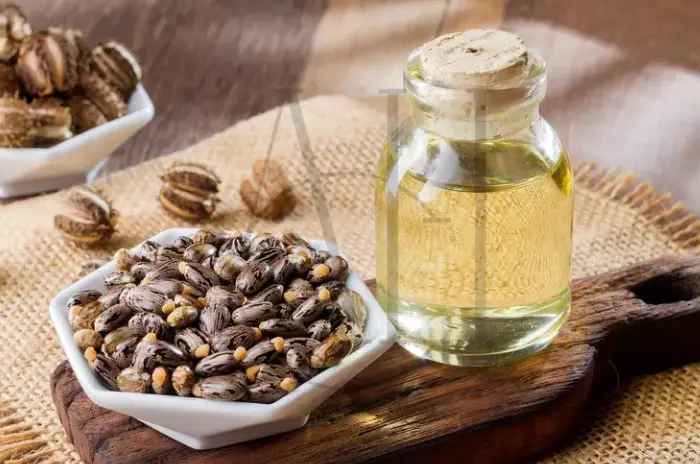Amla oil has emerged as one of the most talked-about natural remedies for hair loss prevention and scalp health. This ancient Ayurvedic treatment, derived from the Indian gooseberry, promises to boost hair growth, reduce greying of the hair, and strengthen damaged strands. But does the science support these bold claims, or is amla oil simply another wellness trend?
With millions of people experiencing hair loss worldwide, the search for effective, natural solutions has intensified. Amla oil stands out due to its rich concentration of vitamin C antioxidants, essential fatty acids, and protective compounds that may benefit both scalp health and hair strength and growth. This comprehensive guide examines what research reveals about amla oil’s potential benefits, proper usage methods, and important safety considerations.
Table of Contents
ToggleWhat is amla oil?
Amla oil is a nutrient-rich extract derived from the Indian gooseberry (Emblica officinalis), a small, tart fruit revered in traditional medicine systems across South Asia. This powerful hair oil contains exceptionally high levels of vitamin C antioxidants—up to 20 times more than oranges—along with tannins, polyphenols, and essential fatty acids that work synergistically to promote hair health.
The amla fruit itself has been documented in ancient texts as a “divine fruit” capable of enhancing longevity and vitality. Modern analysis reveals why this reputation persists: amla contains a unique combination of bioactive compounds including gallic acid, ellagic acid, and emblicanin A and B, which contribute to its remarkable antioxidant capacity. These compounds work together to combat oxidative stress, one of the primary factors contributing to hair loss and premature aging of hair follicles.
The fruit itself has been used for over 5,000 years in Ayurvedic medicine to promote hair health, support immunity, and enhance overall vitality. Traditional practitioners recognized that amla’s cooling properties could balance excess heat in the body, which was believed to contribute to hair loss and premature greying of the hair. Amla oil concentrates these beneficial compounds into a potent topical treatment that can be easily applied to the scalp and hair strands.
Unlike synthetic hair treatments that often target single pathways, amla oil works through multiple mechanisms simultaneously. Its rich nutrient profile supports cellular regeneration, provides antioxidant protection, and delivers essential minerals directly to hair follicles. The oil’s natural composition also includes phenolic compounds, flavonoids, and ascorbic acid derivatives that enhance its therapeutic potential for scalp health and hair growth.
The traditional processing methods used to create amla oil preserve these delicate compounds while creating a stable, shelf-stable product. Modern extraction techniques have further refined this process, allowing for standardized concentrations of active ingredients that make contemporary amla oil products more consistent and potent than ever before.
How is amla oil made?
Creating high-quality amla oil involves several traditional methods that preserve the fruit’s beneficial compounds while creating a stable, usable product. Understanding the production process helps you choose the most effective amla oil for your hair care routine and ensures you’re getting a product that maintains the integrity of the original fruit’s therapeutic properties.
The quality of amla oil depends heavily on the source of the fruit, the extraction method used, and the type of carrier oil employed. Traditional producers often source amla from specific regions known for their superior fruit quality, particularly areas with optimal soil conditions and climate. The timing of harvest also plays a crucial role, as amla fruit picked at peak ripeness contains the highest concentration of vitamin C antioxidants and other beneficial compounds.
Soak amla fruit in oil (coconut, sesame, mineral)
The traditional method begins by soaking fresh amla fruit or powder in a carrier oil such as coconut, sesame, or mineral oil. Coconut oil is particularly popular due to its own hair growth benefits and excellent absorption properties, while sesame oil offers superior penetration and longer shelf life. The choice of carrier oil significantly impacts the final product’s effectiveness and stability.
During the soaking process, which typically lasts 24-48 hours, the carrier oil gradually extracts water-soluble vitamins, minerals, and other bioactive compounds from the amla. Temperature control during this phase is crucial, as excessive heat can destroy sensitive nutrients like vitamin C. Many traditional producers perform this step in cool, shaded areas to preserve maximum potency.
The ratio of amla to carrier oil varies depending on the desired concentration, but traditional formulations typically use a 1:3 or 1:4 ratio of fruit to oil. Some producers enhance this process by crushing or chopping the amla fruit before soaking, which increases the surface area and allows for more complete extraction of beneficial compounds.
Blend, heat and strain the mixture at home
After soaking, the mixture is gently heated at low temperatures to further extract beneficial compounds without destroying heat-sensitive nutrients like vitamin C. Traditional heating methods use controlled temperatures between 60-80°C (140-176°F) to maximize extraction while preserving therapeutic compounds. This careful temperature control distinguishes high-quality amla oil from mass-produced versions that may use high-heat processing.
The mixture is then blended to break down fruit fibers and maximize nutrient extraction. Traditional methods use wooden implements or stone grinding tools to avoid introducing metallic contamination that could accelerate oxidation. Modern producers may use stainless steel equipment with temperature monitoring to maintain consistency while preserving quality.
The straining process involves multiple filtrations to remove solid particles while retaining dissolved nutrients. Traditional producers use fine cloth, cheesecloth, or natural fiber filters that allow beneficial compounds to pass through while removing unwanted debris. This process may be repeated several times to achieve the desired clarity and purity.
Store in glass jars for best potency
Proper storage is crucial for maintaining amla oil’s effectiveness and extending its shelf life. Glass containers protect the oil from light and chemical interactions that can occur with plastic bottles, which may leach harmful compounds or accelerate degradation of beneficial nutrients. Dark amber or cobalt blue glass offers additional UV protection, preventing photodegradation of sensitive compounds.
Temperature stability during storage affects the oil’s longevity and potency. Amla oil should be stored in cool, dry environments away from direct sunlight and heat sources. Optimal storage temperatures range from 15-25°C (59-77°F), which helps preserve the integrity of vitamin C and other temperature-sensitive compounds.
When stored correctly in appropriate containers, amla oil can maintain its potency for 12-18 months. However, factors like exposure to air, light, and temperature fluctuations can significantly reduce this timeframe. Some producers add natural preservatives like vitamin E oil to extend shelf life without compromising the oil’s natural properties.
Uses of amla oil
Amla oil serves multiple purposes beyond hair care, making it a versatile addition to your wellness routine. Its rich nutrient profile and therapeutic properties have made it a cornerstone of traditional medicine systems, while modern research continues to uncover new applications for this remarkable natural hair treatment.
The versatility of amla oil stems from its unique combination of bioactive compounds that can benefit various body systems. While hair care remains the most popular application, understanding the full range of amla oil uses helps appreciate why this ancient remedy has maintained its relevance in contemporary wellness practices.
Promotes hair and scalp health
The primary use of amla oil focuses on scalp health and hair strength and growth. This application represents thousands of years of traditional knowledge combined with emerging scientific validation. Regular application may help reduce breakage, add hair shine, and create an environment conducive to healthy follicle function through multiple mechanisms.
Amla oil’s impact on hair health extends beyond surface-level improvements. The oil’s antioxidants protect against environmental damage including UV radiation, pollution, and oxidative stress that can weaken hair strands and damage follicles. Its moisturizing properties help combat dry hair and scalp inflammation, while its nutrient density provides direct nourishment to hair roots.
The oil’s ability to penetrate the hair shaft makes it particularly effective for addressing internal hair damage. Unlike surface treatments that only provide temporary benefits, amla oil can potentially strengthen hair from within by delivering nutrients directly to the cortex where structural proteins reside. This deep-penetrating action may explain why traditional users report long-term improvements in hair strength and growth.
Modern hair science recognizes that healthy hair growth requires optimal scalp health, adequate nutrition, and protection from damaging factors. Amla oil addresses all these requirements simultaneously, making it a comprehensive approach to hair care that aligns with both traditional wisdom and contemporary understanding of hair biology.
Supports skin tone, digestion, immunity
When consumed as a supplement or applied topically to skin, amla may support immune function due to its exceptionally high vitamin C content. Traditional Ayurvedic medicine considers amla one of the most potent rasayanas (rejuvenative substances) capable of enhancing overall vitality and longevity.
The antioxidant capacity of amla extends beyond hair care applications. Some people use amla oil on their skin to potentially improve tone and texture, though this application requires careful consideration of individual skin sensitivity and proper dilution. The oil’s vitamin C content may support collagen synthesis in skin tissue, potentially contributing to improved skin health and appearance.
Digestive applications of amla typically involve oral consumption rather than topical oil application. Traditional medicine systems credit amla with supporting digestive fire (agni) and promoting nutrient absorption, which indirectly benefits hair health by ensuring optimal nutrient availability for follicle function.
May help blood sugar, cholesterol, vision
Traditional medicine systems credit amla with supporting metabolic health, cardiovascular function, and visual acuity, though most research in these areas involves oral consumption rather than topical oil application. These potential benefits stem from amla’s rich antioxidant profile and bioactive compounds that may influence various physiological processes.
Recent research has investigated amla’s potential impact on blood glucose regulation, with some studies suggesting that amla compounds may help support healthy blood sugar levels. However, these effects primarily relate to internal consumption rather than topical hair oil application.
The connection between overall health and hair health means that amla’s systemic benefits may indirectly support hair growth and scalp health. Improved circulation, enhanced nutrient absorption, and reduced oxidative stress throughout the body can create conditions that favor healthy hair growth and may help address hair loss that stems from systemic health issues.

Does amla oil really work?
The effectiveness of amla oil for hair loss prevention and scalp health involves examining both traditional knowledge and modern scientific research. While promising, the evidence presents a nuanced picture that requires careful interpretation to set realistic expectations for potential users.
The question of amla oil’s effectiveness cannot be answered with a simple yes or no. Like many traditional remedies, amla oil operates through complex mechanisms that may not translate directly to the controlled conditions typically used in modern clinical trials. However, the growing body of research on amla’s bioactive compounds provides increasing scientific support for many traditional claims.
Understanding amla oil’s effectiveness requires considering multiple factors including individual variability, application methods, product quality, and the specific hair concerns being addressed. What works dramatically for one person may produce modest results for another, depending on factors like genetics, overall health, lifestyle, and the underlying causes of their hair loss or scalp issues.
Traditional use vs scientific proof
Amla has thousands of years of documented use in Ayurvedic medicine for promoting hair growth and preventing greying of the hair. Traditional practitioners report success using amla oil for various hair concerns, from dandruff treatment to hair loss prevention, with these applications being passed down through generations of healers and families.
Traditional knowledge systems like Ayurveda operate on different principles than modern science, focusing on balancing body energies and supporting overall health rather than targeting specific molecular pathways. This holistic approach makes traditional claims difficult to validate using conventional research methods, but doesn’t necessarily invalidate the observed benefits.
The consistency of traditional reports across different cultures and time periods suggests that amla oil likely provides genuine benefits for hair health. However, traditional use doesn’t automatically translate to scientifically proven effectiveness, and individual results may vary significantly based on numerous factors including genetics, overall health, and application consistency.
Modern research is beginning to bridge the gap between traditional knowledge and scientific validation. Studies on amla’s individual compounds are revealing mechanisms that could explain many traditional uses, though comprehensive human clinical trials specifically testing amla oil for hair care applications remain limited.
Contains nutrients like vitamin C, polyphenols
Amla oil contains verified beneficial compounds including vitamin C antioxidants, tannins, polyphenols, and essential fatty acids that have established roles in supporting cellular health and protecting against oxidative damage. The vitamin C content of amla is particularly remarkable, with concentrations that exceed most other natural sources by significant margins.
The polyphenolic compounds in amla include gallic acid, ellagic acid, and various flavonoids that demonstrate potent antioxidant activity in laboratory studies. These compounds can neutralize free radicals that contribute to cellular aging and damage, potentially protecting hair follicles from oxidative stress that contributes to hair loss and premature greying.
Research has identified over 100 bioactive compounds in amla, many of which have demonstrated biological activity relevant to hair health in laboratory studies. These include compounds with anti-inflammatory, antimicrobial, and circulation-enhancing properties that could theoretically benefit scalp health and hair growth.
The presence of these beneficial compounds provides a scientific foundation for amla oil’s potential benefits, though the concentration and bioavailability of these compounds in topically applied oil preparations may differ from laboratory studies using standardized extracts or oral preparations.
Most studies are in animals or lab settings
Current research on amla predominantly involves animal studies or laboratory experiments rather than large-scale human clinical trials specifically testing amla oil for hair loss treatment. While these studies show promising results for hair growth and scalp health, translating laboratory findings to real-world human applications requires careful consideration.
Animal studies have demonstrated that amla extracts can stimulate hair growth in laboratory mice and rats, with some studies showing increased hair follicle density and enhanced growth phase duration. However, animal hair growth patterns and responses may not directly translate to human hair growth cycles and mechanisms.
Laboratory studies using human hair follicles or cell cultures have shown that amla compounds can stimulate cellular activity associated with hair growth and protect against damage from various stressors. These findings provide mechanistic support for amla oil’s potential benefits but don’t necessarily predict clinical effectiveness in living humans.
The lack of large-scale human clinical trials represents a significant gap in the evidence base for amla oil. While smaller studies and case reports suggest benefits, more comprehensive research is needed to definitively establish amla oil’s effectiveness for various hair care applications and to determine optimal usage protocols for different hair concerns.
Hair benefits of amla oil
Amla oil offers several potential benefits for hair health, supported by both traditional use and emerging scientific evidence. Understanding these benefits helps set realistic expectations for your hair care routine.
| Hair Benefit | Active Compounds | Mechanism of Action | Expected Timeline |
|---|---|---|---|
| Hair Growth | Vitamin C, Tannins | Stimulates follicles, improves circulation | 2-3 months |
| Dandruff Control | Polyphenols, Antioxidants | Antimicrobial action, pH balance | 2-4 weeks |
| Grey Hair Prevention | Vitamin C, Minerals | Supports melanin production | 3-6 months |
| Hair Strengthening | Protein, Calcium | Reinforces hair shaft structure | 1-2 months |
| Scalp Health | Essential fatty acids | Moisturizes, reduces inflammation | 2-3 weeks |
May reduce hair loss and greying
Amla oil contains compounds that may help reduce hair loss by supporting the natural hair growth cycle and protecting follicles from damage. Key mechanisms include:
- Supporting healthy blood circulation to hair follicles
- Providing essential nutrients that strengthen hair roots
- Protecting against oxidative stress that damages follicles
- Potentially inhibiting DHT production that causes pattern baldness
Some studies suggest that amla may help delay grey hair by supporting melanin production in hair follicles, though human evidence remains limited.
Evidence it may strengthen hair and scalp
The vitamin C and antioxidants in amla oil may help strengthen hair strands by supporting collagen production and protecting against environmental damage. Benefits include:
- Enhanced keratin production for stronger hair shafts
- Improved hair elasticity and flexibility
- Protection against heat and UV damage
- Reduced susceptibility to chemical damage from treatments
Regular use may improve hair elasticity and reduce breakage, particularly beneficial for damaged or chemically-treated hair.
Possible dandruff and infection control
Amla oil’s antimicrobial properties may help fight dandruff and reduce scalp inflammation. The oil works through:
- Natural antibacterial and antifungal compounds
- pH balancing properties that discourage harmful microorganisms
- Anti-inflammatory effects that soothe irritated scalp
- Gentle exfoliation that removes dead skin cells and buildup
The oil’s natural compounds can help balance scalp pH and create an environment less favorable to harmful bacteria and fungi that contribute to dandruff and other scalp conditions.
Boosts scalp health and moisture
Regular amla oil application may improve overall scalp health by providing essential nutrients directly to hair follicles. Key benefits include:
- Deep moisturization for dry, flaky scalps
- Improved nutrient delivery to hair roots
- Enhanced scalp barrier function
- Stimulated blood flow through massage application
The oil acts as a dry hair moisturizer, helping to restore hydration and create optimal conditions for healthy hair growth.

Side effects to know
While amla oil is generally considered safe for topical use, understanding potential side effects helps ensure safe and effective application.
Rare risk of skin irritation or pigmentation
Some individuals may experience skin sensitivity when first using amla oil, particularly those with sensitive skin or allergies to related plants. In rare cases, amla oil may temporarily affect skin pigmentation, especially with prolonged exposure to sunlight after application.
Caution with UV exposure and darker skin
UV caution is particularly important when using amla oil, as some compounds may increase photosensitivity. Individuals with darker skin tones should monitor for any changes in pigmentation and consider using amla oil as a pre-wash treatment rather than leaving it on during sun exposure.
Main benefits of Amla Oil for hair
Understanding the specific mechanisms by which amla oil may benefit your hair helps optimize your hair care routine and set appropriate expectations.
Helps moisturize dry, brittle hair
Amla oil excels as a dry hair moisturizer, penetrating the hair shaft to restore hydration and flexibility. The oil’s molecular structure allows it to fill gaps in damaged hair cuticles, reducing frizz and improving manageability. Regular use may transform dry hair into softer, more lustrous strands.
Regulates scalp oil and soothes inflammation
Despite being an oil-based treatment, amla oil may help balance sebum production in the scalp. Its anti-inflammatory properties can soothe irritated skin and reduce scalp inflammation that contributes to hair loss and poor hair growth. This balancing effect makes it suitable even for those with naturally oily scalps.
Fights dandruff and itching with antibacterial action
The natural antimicrobial compounds in amla oil provide effective dandruff treatment by addressing the underlying fungal and bacterial imbalances that cause flaking and itching. Regular use may reduce the need for harsh anti-dandruff shampoos while providing gentle, natural relief.
Strengthens hair and protects the cuticle
Amla oil provides cuticle protection by forming a protective barrier around each hair strand. This protection helps prevent damage from heat styling, environmental pollutants, and chemical treatments. The oil’s vitamin C content supports collagen production, which strengthens the hair shaft from within.
May prevent hair loss by supporting growth phase
Some research suggests that amla oil may help extend the anagen (growth) phase of the hair cycle while shortening the telogen (resting) phase. This shift could potentially result in longer, stronger hair and reduced hair loss over time, though more human studies are needed to confirm these effects.
How to use amla oil
Proper application techniques maximize amla oil’s benefits while minimizing potential side effects. These methods accommodate different hair types and styling preferences.
Apply directly as scalp or hair treatment
For direct application, warm a small amount of amla oil between your palms and massage gently into the scalp using circular motions. This scalp massage stimulates blood flow and helps the oil penetrate effectively. Application steps:
- Start with clean, slightly damp hair for better absorption
- Use 1-2 teaspoons for shoulder-length hair
- Focus on problem areas like thinning spots or dry patches
- Work any remaining oil through the hair strands, focusing on the mid-lengths and ends
- Avoid applying too much oil to prevent greasy appearance
Mix with powder for a hair mask
Combining amla oil with amla powder creates a potent hair mask with enhanced nutrient density. Mix 2-3 tablespoons of oil with 1 tablespoon of powder to form a smooth paste. Mask preparation benefits:
- Enhanced nutrient concentration from dual amla sources
- Thicker consistency for easier application and longer contact time
- Better adherence to hair strands and scalp
- Suitable for weekly intensive treatments
- Can be customized with additional ingredients like honey or yogurt
This mask provides intensive treatment for severely damaged or dry hair.
Use as pre-wash detangler to smooth strands
As a pre-wash treatment, amla oil helps detangle knots and protect hair during shampooing. Apply the oil 30 minutes before washing, focusing on areas prone to tangling. This method is particularly beneficial for coarse hair or hair prone to breakage.
Massage into scalp to stimulate blood flow
Scalp massage with amla oil promotes circulation, which may enhance nutrient delivery to hair follicles. Use gentle, circular motions for 5-10 minutes, paying special attention to areas of thinning or hair loss. This technique may help support natural hair growth processes.
Leave for 1–2 hours or overnight before rinsing
Treatment duration depends on your hair’s condition and your schedule. For maintenance, 1-2 hours provides sufficient penetration time. For intensive treatment, overnight application allows maximum nutrient absorption. Always use a protective pillowcase to prevent oil transfer.
Are there any side effects?
Understanding potential adverse reactions helps ensure safe use of amla oil while maximizing its benefits for hair health.
Rare skin sensitivity—patch test first
Skin sensitivity reactions are uncommon but possible, especially in individuals with plant allergies. Perform a patch test by applying a small amount of amla oil to your inner wrist and waiting 24 hours to check for irritation. This simple precaution prevents widespread scalp reactions.
Generally safe, even for oily scalp types
Amla oil is well-tolerated by most people, including those with naturally oily scalps. The oil’s balancing properties may actually help regulate excess sebum production rather than exacerbating oiliness. Start with small amounts to assess your scalp’s response.
Watch for rare irritation or colour change
Monitor your scalp and skin for any unusual reactions, including persistent redness, itching, or changes in pigmentation. Discontinue use if adverse reactions occur and consult a dermatologist if symptoms persist. Most people can use amla oil without experiencing any negative effects.
Who can benefit from amla oil?
Amla oil’s versatility makes it suitable for a wide range of hair types and concerns, though some individuals may see more dramatic results than others.
Works for all hair types
Amla oil adapts well to different hair textures and conditions. Benefits by hair type include:
- Fine hair: Strengthening properties without weighing down delicate strands
- Thick hair: Enhanced moisture distribution and improved manageability
- Curly hair: Frizz reduction and curl definition enhancement
- Straight hair: Added shine and protection from environmental damage
- Chemically-treated hair: Repair and restoration of damaged cuticles
The oil’s lightweight nature prevents excessive weighing down of delicate strands while providing adequate nourishment for thicker textures.
Especially good for dry, frizzy, damaged, or oily hair
Individuals with dry hair, frizz, chemical damage, or even oily scalps often see the most noticeable improvements with amla oil. Specific benefits include:
- Dry hair: Deep moisturization and hydration restoration
- Frizzy hair: Cuticle smoothing and humidity protection
- Damaged hair: Protein reinforcement and structural repair
- Oily scalp: Sebum regulation and pH balancing
- Thinning hair: Follicle stimulation and growth support
The oil addresses multiple concerns simultaneously, making it an efficient addition to complex hair care routines. Those dealing with scalp inflammation or dandruff may also experience significant relief.
Amla protects hair from damage
The protective properties of amla oil help shield hair from various environmental and styling stressors that contribute to breakage and deterioration.
Tannins and calcium guard against heat and UV damage
Amla oil contains natural tannins and calcium that form a protective barrier around hair strands. This barrier helps deflect heat from styling tools and UV radiation from sun exposure. Regular use may reduce the cumulative damage that leads to brittle, breaking hair.
Strengthens keratin to reduce breakage
The vitamin C and other nutrients in amla oil support keratin production and maintenance in hair strands. Stronger keratin structure means more resilient hair that can withstand daily styling and environmental stresses. This strengthening effect may be particularly beneficial for those experiencing increased hair loss due to breakage.
Amla reduces hair loss
Several mechanisms may explain how amla oil could help address hair loss, though more human research is needed to confirm these effects.
Inhibits 5‑alpha reductase like finasteride
Some studies suggest that amla compounds may inhibit 5-alpha reductase, the enzyme that converts testosterone to DHT (dihydrotestosterone). Elevated DHT levels contribute to pattern hair loss in both men and women. By potentially reducing DHT production, amla oil might help slow or prevent hair loss progression.
Supports hormonal hair health (PCOS, thyroid)
Amla oil’s antioxidant properties may help support overall hormonal balance, which is crucial for maintaining healthy hair growth. Women with PCOS or thyroid disorders often experience hair loss related to hormonal imbalances. While not a cure, amla oil may provide supportive benefits as part of a comprehensive treatment approach.
Amla balances flaky scalp
Scalp health forms the foundation for healthy hair growth, and amla oil addresses several common scalp concerns that can impede optimal hair development.
Vitamin C builds collagen and clears buildup
The high vitamin C content in amla oil supports collagen synthesis in the scalp, promoting healthy skin structure and function. Vitamin C also helps clear cellular debris and product buildup that can clog follicles and impede hair growth. This cleansing action creates a healthier environment for new hair development.
Acts as natural scalp exfoliant with anti‑dandruff mix
Amla oil provides gentle exfoliation that removes dead skin cells and excess sebum without harsh scrubbing. Combined with its anti-dandruff properties, this exfoliating action helps maintain a clean, balanced scalp environment. Regular use may reduce the frequency of dandruff flares and associated itching.
Amla oil works as a conditioner
The conditioning properties of amla oil make it an excellent natural alternative to synthetic hair conditioners, providing both immediate and long-term benefits.
Vitamin E adds shine and reduces frizz
Amla oil contains vitamin E, which creates a smooth surface on hair strands that reflects light effectively. This smoothing action reduces frizz and enhances hair shine naturally. The conditioning effect is particularly noticeable on damaged or chemically-treated hair that has lost its natural luster.
Moisturises, delays greying per Ayurvedic theory
According to Ayurvedic principles, amla oil helps balance the doshas (body energies) that govern hair health and pigmentation. While scientific evidence for delay grey hair effects remains limited, the oil’s moisturizing properties definitely improve hair texture and appearance. Regular use may help maintain natural hair color longer by supporting overall follicle health.
Can Amla Oil Be Used After a Hair Transplant?
Hair transplant patients often seek natural ways to support their recovery and optimize results. Amla oil may offer benefits during the post-surgical period, though proper timing and technique are crucial.
When it’s safe to apply on the scalp after surgery
Most hair transplant surgeons recommend waiting at least 10-14 days before applying any topical treatments to the transplanted area. This waiting period allows initial healing and reduces infection risk. Always consult your surgeon before introducing new products to your post-transplant hair care routine.
Soothing benefits for post-transplant dryness
After the initial healing period, amla oil may help address the dryness and sensitivity common after hair transplant procedures. The oil’s gentle moisturizing properties can soothe irritated skin without interfering with the transplanted follicles’ establishment process.
Always follow your surgeon’s aftercare advice
While amla oil may offer benefits for hair transplant patients, your surgeon’s specific aftercare instructions should always take priority. Some surgeons may prefer that patients avoid all topical treatments for extended periods, while others may approve gentle, natural products like amla oil after initial healing is complete.
FAQ for Does Amla Oil Work for Hair Loss What Science Says About Its Benefits
What is amla oil and how is it traditionally made?
Amla oil is extracted from the Indian gooseberry through traditional methods involving soaking the fruit in carrier oils like coconut or sesame, then heating and straining to create a nutrient-rich hair oil.
Does amla oil really work for hair, and is there scientific proof?
While amla oil contains beneficial vitamin C antioxidants and has traditional support, most scientific studies are conducted in animals or laboratories rather than comprehensive human trials.
What are the main hair benefits attributed to amla oil?
Amla oil may help reduce hair loss, fight dandruff, strengthen hair strands, add hair shine, and support overall scalp health through its rich antioxidant content.
How can amla oil be used effectively in a hair care routine?
Apply amla oil directly to the scalp with massage, use as a pre-wash treatment, create masks with amla powder, or leave on for 1-2 hours before shampooing for best results.
Are there any known side effects or precautions when using amla oil?
Amla oil rarely causes skin sensitivity, but patch testing is recommended; some UV caution is advised as the oil may increase photosensitivity in certain individuals.
Who can benefit most from using amla oil for their hair?
Amla oil works for all hair types but is especially beneficial for dry hair, damaged strands, scalp inflammation, and those seeking natural hair care solutions.
How does amla oil potentially help reduce hair loss?
Amla oil may inhibit 5-alpha reductase enzyme activity and support the hair growth cycle, potentially helping reduce hair loss and extend the growth phase of hair follicles.
Can amla oil help prevent or reverse premature greying of hair?
Traditional Ayurvedic theory suggests amla oil may help delay grey hair by supporting melanin production, though scientific evidence for reducing hair color changes remains limited.




